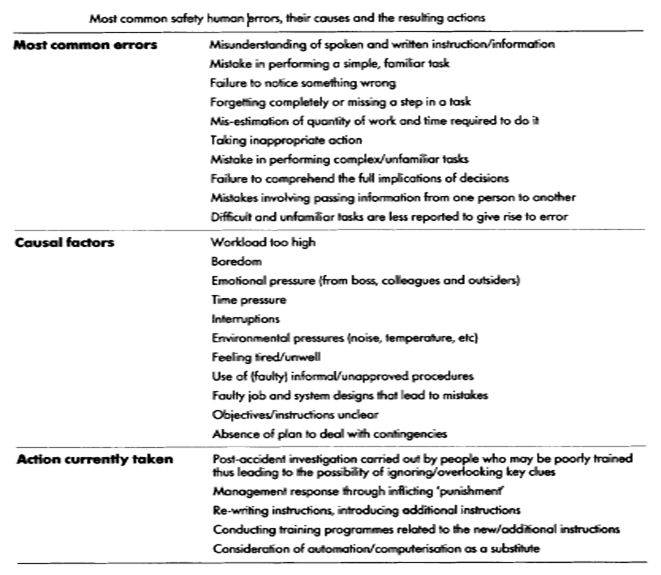←
Total Quality Management (TQM)
The Implementation Of Total Safety Systems: A Management Responslblllty
Most common safety human errors, their causes and the resulting actions:
A survey which looked at what kind of human-errors are most common, what causal factors are responsible for those errors and what actions are being taken to deal with them, has revealed that there is wide neglect in management's responsibility.

Conclusions:
The following conclusions can therefore be drawn from the various reported findings:
- Managers do not always consider safety to be their direct responsibility. They tend to rely on the input of safety specialists and perceive their role only in declaring the organization’s intention to comply with the legal requirements in order to ensure the safety, health and welfare of all employees;
- Managers do not consider safety to be a value adding activity. As such they confine its role to the bare minimum for compliance with legal requirements. Statistics which are collected measure failure rates than preventative measures;
- Poor interest in safety matters is also characterized by the lack of proper procedures, emergency plans, adequate investment on safety and proper training strategies;
- Workplace and job designs are not developed with safety in mind. Workers are constantly pressurized to meet economic requirements without being properly prepared for changes in workload, task variation or process modification. In addition, economic motives often mean that investment on better design of work environment is discarded because it cannot be justified, since this is not directly linked to output.